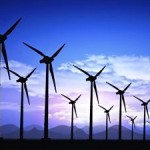Laxenburg, Austria – Providing government subsidies for purchasing cooking fuel, as well as making finance available for buying related appliances, could move the rural poor in India from heavy dependence on polluting biomass fuels to more efficient and cleaner combusting LPG fuel. Such subsides are economically justifiable because they could increase labor productivity and nourish economic development among India’s rural poor.
These are some of the conclusions of a new study published in ‘Energy Policy’ by researchers at the International Institute for Applied Systems Analysis (IIASA), Austria, and the VTT Technical Research Center of Finland. The study, noting that improving access to affordable modern energy is critical to improving living standards in the developing world, focuses on the rural poor in India and looked at strategies for ending “energy poverty”.
The study is the first to break down the different cooking fuels used in India by factoring in both income and location. By examining ten categories of cooking fuel users, from the very poorest in rural regions, to the wealthiest in the cities, the scientists were able to model how changes in government policies could alter fuel use patterns in the population. Specifically, the authors said they were able to “analyze effective policy choices to improve the penetration of modern cooking fuels among the poor.”

Currently, in India, the rural population relies largely on traditional biomass fuels, primarily firewood, animal and agricultural residues. These fuels are not only inefficient as energy sources, they take time to gather, emit harmful particulates, and their extensive use can result in deforestation. The study found that biomass is the fuel of choice among poor urban dwellers as well, but as their income increases, urban dwellers switch first to kerosene and then to LPG, or liquefied petroleum gas.
Using a mathematical model developed at IIASA called MESSAGE-Access that looks at both patterns of fuel use and economic strategies for changing those patterns, the team found that improving financing for the appliances needed to use LPG, combined with a small LPG subsidy for the fuel itself, could mean “the whole population might be prompted to switch to LPG.” By doing nothing and letting the current consumption continue, the number of people using traditional biomass would rise dramatically over the next decade.
While promoting the wide-spread adoption of LPG as a fuel source might seem odd at a time when the world is shifting to a low-carbon economy, the researchers say, the emissions from LPG would be minor compared to current total emissions from India. The authors also note that the shift from cooking with traditional fuels to modern fuels will have a substantial effect on the lives of more than 700 million inhabitants in 2020, and is likely to be an important pre-condition for the improvement of health and the eradication of poverty among these households.
Economic development and the adoption of modern cooking fuels go hand in hand, the study concludes, “and it is hard to imagine improving one without improving the other.”
The methodology applied in the study has been substantially expanded and adapted to analyze energy poverty in other regions of the world, this broader analysis is a component of the IIASA coordinated Global Energy Assessment*.
IIASA scientists Volker Krey, Shonali Pachauri, and Keywan Riahi co-authored the study with principal investigator Tommi Ekholm, the VTT Technical Research Center of Finland and the Helsinki University of Technology.
Original Work:
Title of the Study: “Determinants of Household Energy Consumption in India”
Authors: Tommi Ekholm, Volker Krey, Shonali Pachauri and Keywan Riahi
Published in ‘Energy Policy’ Volume 38, Issue 10, October 2010, Pages 5696-5707
Click here to read Full Study.

About IIASA
IIASA is an international scientific institute that conducts research into the critical issues of global environmental, economic, technological, and social change that we face in the twenty-first century. Their findings provide valuable options to policy makers to shape the future of changing world. IIASA is independent and funded by scientific institutions in Africa, the Americas, Asia, and Europe. For more information, visit www.iiasa.ac.at.
*About the Global Energy Assessment (GEA)
Coordinated by IIASA and involving over 450 energy researchers and experts across government, industry and research, the Global Energy Assessment (GEA) has assessed the inter-linkages between all energy related areas in the developed and developing world and will provide options to help decision makers address issues of energy sustainability, and importantly access. The final assessment will be published in early 2011. For more information, check http://www.iiasa.ac.at/Research/ENE/GEA/index.html.
Source: IIASA Press Release dated September 23, 2010.












